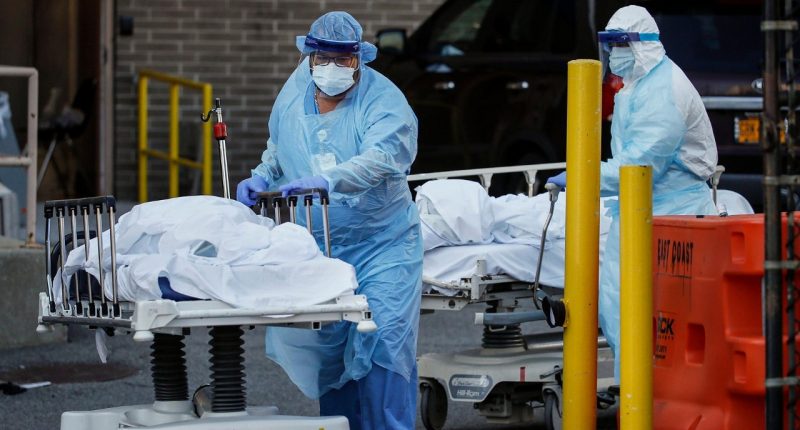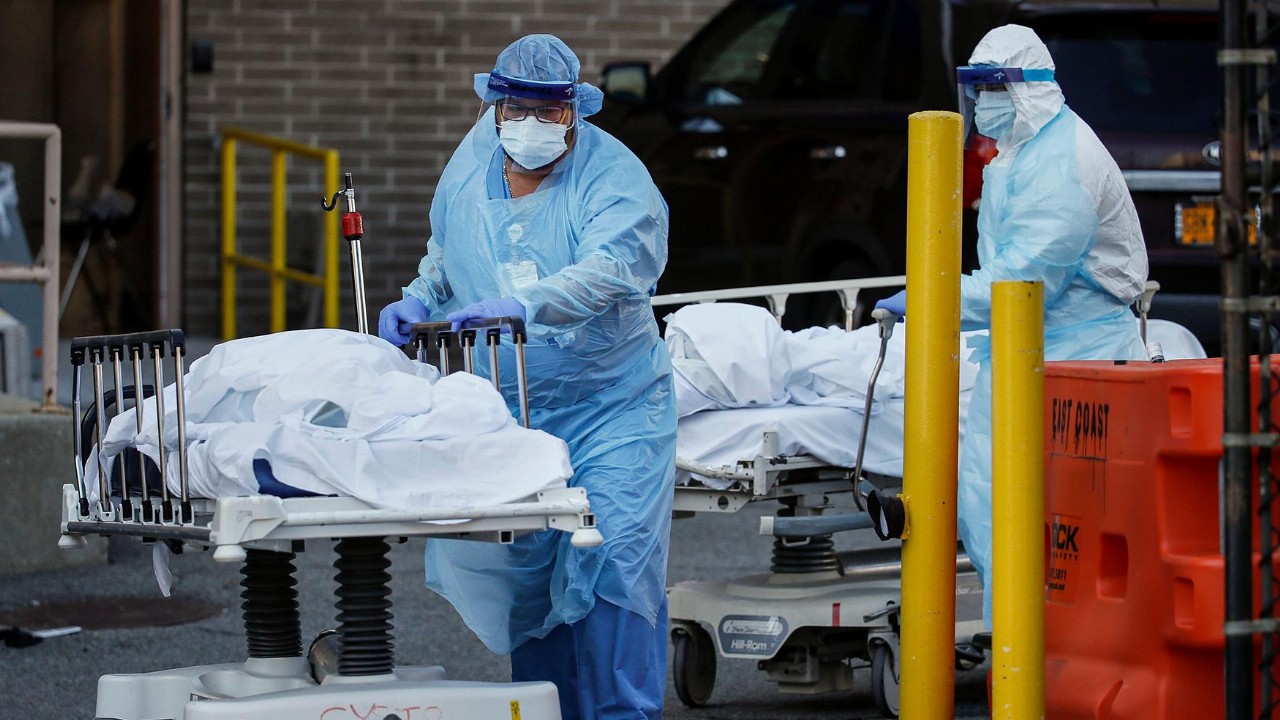- The United States has hit over five million COVID-19 cases and over 162,000 deaths
- Though cases are still rising, the recorded death rate is roughly half of what it was in late-April and early-May
- Yet, the true COVID-19 death rate is still clouded in uncertainty
- A July study co-authored by the U.S. Centre for Disease Control suggests that the mortality rate of the virus is 10 times lower than what’s been reported so far
- Meanwhile, a Yale study suggests COVID-19 deaths are actually being understated
- As such, while any number of deaths is tragic, the true toll of the virus is tough to verify
The United States has officially hit over five million total cases of COVID-19; two million more cases than Brazil, which has the second-highest number of total infections across the globe.
The U.S. has also recorded the most deaths from the virus, with 162,918 succumbing to their infection as of this morning, according to the John Hopkins University Centre for Systems Science and Engineering.
Over the past two weeks alone, over 14,000 Americans have died as a result of COVID-19. This equates to roughly one death every 80 seconds.
Yet, despite an increasing number of infections, the death rate is still lower than what the States recorded in the early days of the pandemic.
The average daily deaths recorded over the past two weeks is around 1000 per day. Over a two-week period from late-April to early-May, however, deaths were at roughly 2000 per day.
Thus, while it’s clear the virus isn’t going anywhere soon, the increased infections have not led to increased deaths.
Death discrepancy
Of course, the figures around daily COVID-19 deaths have been clouded in uncertainty over the past few months. New studies are suggesting that the mortality rate — or the number of infections that result in death — is not as severe as initially thought.
A July study, co-authored by the U.S. Centre for Disease Control (CDC), found that reported COVID-19 cases likely underestimate the real number of cases in a community by between six and 24 times.
The study said in 10 diverse geographic sites across the States, the real estimated number of COVID-19 infections was much greater than the number of reported cases.
“The findings may reflect the number of persons who had mild or no illness or who did not seek medical care or undergo testing but who still may have contributed to ongoing virus transmission in the population.”
Seroprevalence of Antibodies to SARS-CoV-2 in 10 Sites in the United States, March 23-May 12, 2020
CDC Director Dr Robert Redfield said as much in late-June.
“Our best estimate right now is that for every case that’s reported, there are actually 10 other infections,” Dr Robert said.
So, what does this mean?
At face value, a higher-than-reported number of infections suggests that the COVID-19 death rate is lower than initially believed. If people are getting infected with COVID-19 at a rate 10 times higher than what’s being recorded, a mortality rate of five per cent becomes more like 0.5 per cent.
On the inverse, however, a Yale study suggested that the COVID-19 death count is actually understated. The study compared the total number of excess deaths in the U.S. from any cause over March 1 through to May 30 over 2020, with excess deaths over the same period in previous years.
As it turns out, the total deaths in the U.S. were 19 per cent higher than would normally be expected over this time period and 28 per cent higher than the official COVID-19 death count over those months.
This led the Yale researchers to conclude that many of the deaths were caused by the coronavirus and not reported.
As such, the true death rate of the coronavirus pandemic is difficult to verify.
One thing that remains undisputed; the elderly are at a far greater risk of succumbing to the virus than younger people.







